Key takeaways:
- Indie music distribution faces challenges such as lack of transparency in fees, market saturation, and competition against larger labels.
- Independent record labels support artist authenticity and creativity, fostering community and collaboration among musicians.
- Building relationships and diversifying distribution strategies can help indie labels overcome obstacles in reaching audiences.
- Successful labels like Sub Pop, Ghostly International, and 4AD demonstrate the importance of innovative branding and strategic partnerships in navigating distribution challenges.
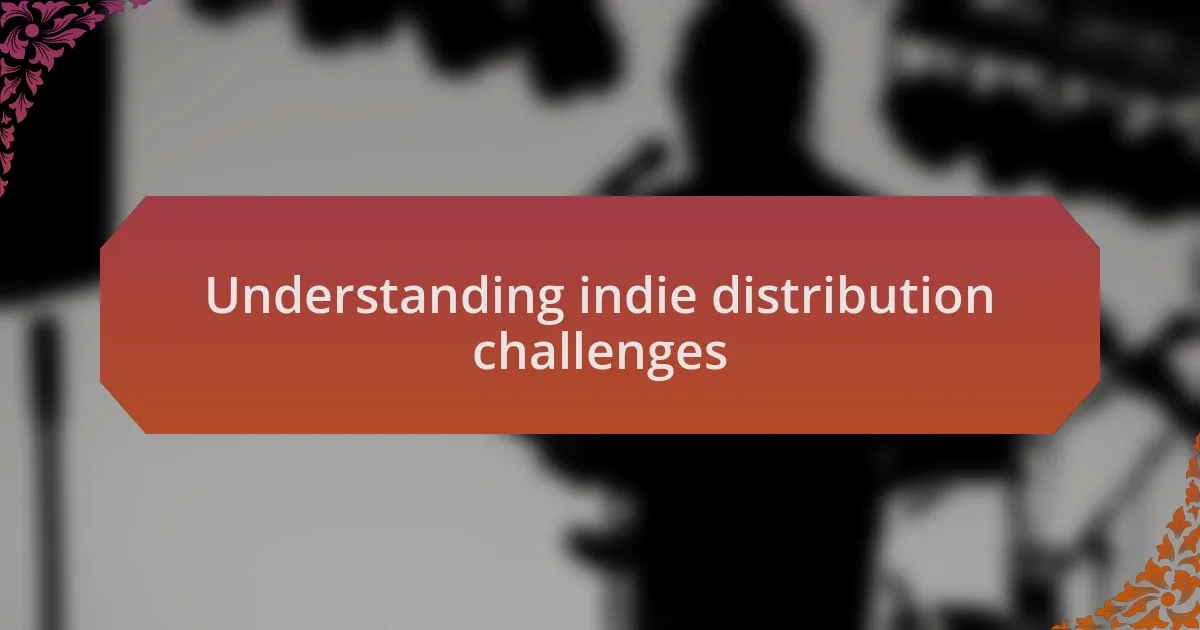
Understanding indie distribution challenges
Distribution in the indie music world can often feel like a tangled web. I remember when I first ventured into this landscape; it was overwhelming to navigate the choices available. How do you even decide which platforms are best for your music? It’s crucial to understand that not every distribution service will meet your needs, especially since many are geared towards mainstream artists.
One challenge I faced was the lack of transparency in distribution fees. I encountered several services with hidden costs that cut into my artists’ earnings, leaving me wondering if the trade-offs were worth it. Have you ever felt like you were throwing money into a black hole? It’s an unsettling feeling, especially when you’re trying to support artists who are already struggling to make ends meet.
Moreover, the saturation of the market makes it tough for indie artists to stand out. I recall a time when one of my acts released a song, and despite putting in hours of promotion, it barely made waves. It left me questioning—what’s the point of great music if no one hears it? This frustration is a common thread among indie labels, as the noise level is louder than ever, making genuine connections with audiences more challenging.
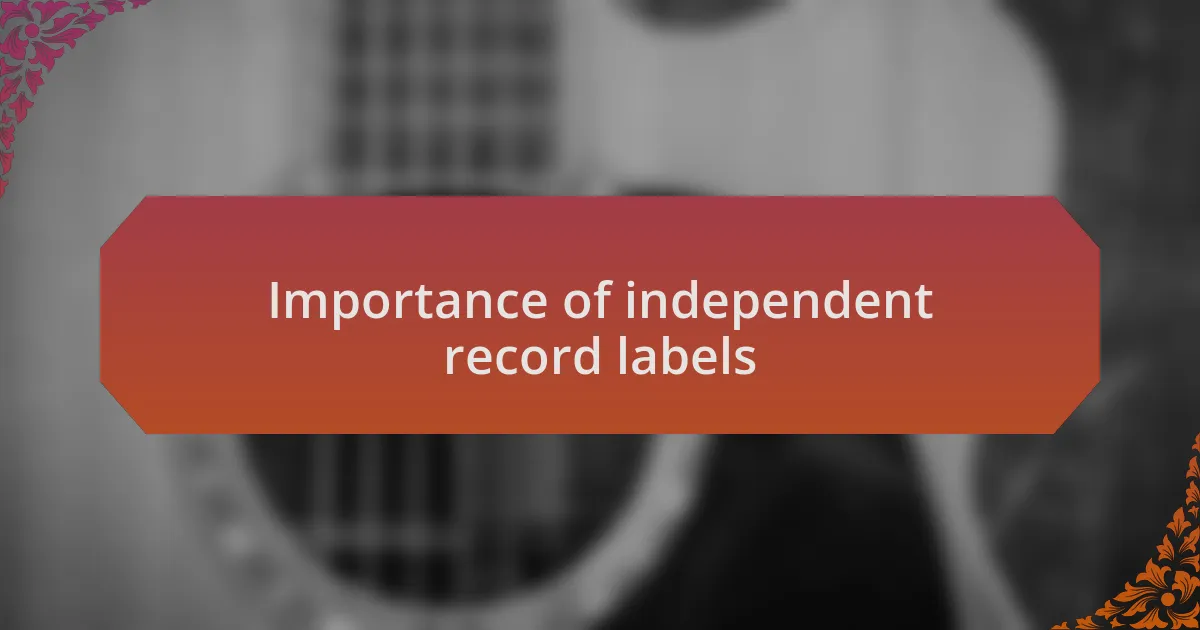
Importance of independent record labels
Independent record labels play a vital role in nurturing creativity and helping artists find their unique voice. I often think back to the early days of my label when I took a chance on a local band that had limitless potential but lacked the connections to thrive. It was exciting to watch them grow and develop their sound, all while maintaining control over their artistic vision, which is something mainstream labels often overlook.
The freedom independent labels provide is essential for artists seeking authenticity. I remember a particular artist wanted to explore a sound that was different from what was trending. Rather than forcing them into a box, I supported their vision, which ultimately led to a project that felt genuinely true to them. Have you ever considered how much an artist flourishes when they can embrace their individuality? That’s the magic that indie labels can cultivate.
Additionally, independent labels foster community and collaboration among artists. I’ve seen firsthand how bringing together musicians under one roof creates a supportive environment that spurs creativity. It’s heartwarming to observe artists pushing each other to explore new directions, challenging norms, and ultimately elevating the independent music scene as a whole. Isn’t it wonderful to think about the powerful connections that can emerge when artists are given the space to thrive?
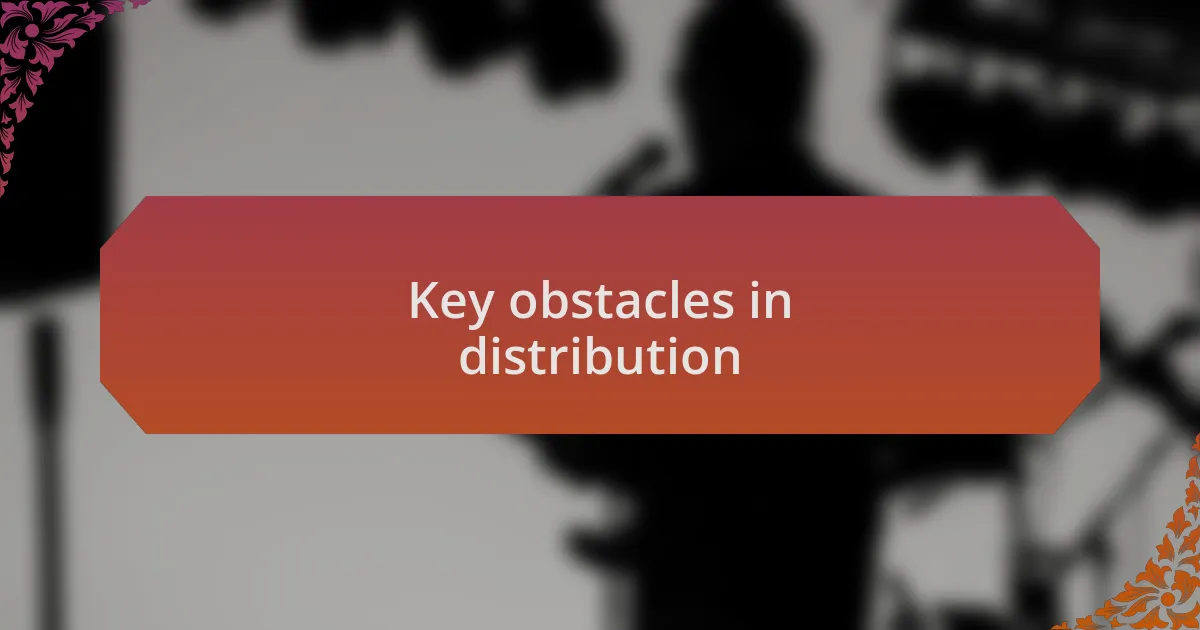
Key obstacles in distribution
Distribution can be a significant hurdle for independent labels, especially when it comes to reaching an audience. I recall a time when I had a brilliant EP ready for release but struggled to find the right distribution channels. It was frustrating, as I knew the music was made for listeners, yet navigating the complex landscape of digital platforms felt like a mountain to climb. I often wonder how many incredible projects go unnoticed due to similar challenges.
Another obstacle I’ve encountered is the competition against larger labels that have established relationships with distributors. I remember an artist I worked with was excited to break into new markets, but we faced gatekeepers at various streaming services. These moments can be disheartening; it’s as if the door is shut solely because of our indie status, leaving me to think, do certain gatekeepers overlook the very essence of creativity for the sake of commercial viability?
Lastly, there’s the financial aspect of distribution that can weigh heavy on an indie label. I reflect on several instances where I had to choose between investing in a solid distribution partner or allocating those funds to marketing efforts. It’s a tough decision that can keep me up at night, pondering the best way to propel an artist’s career. Have you ever felt the pressure of balancing artistic dreams against practical realities?
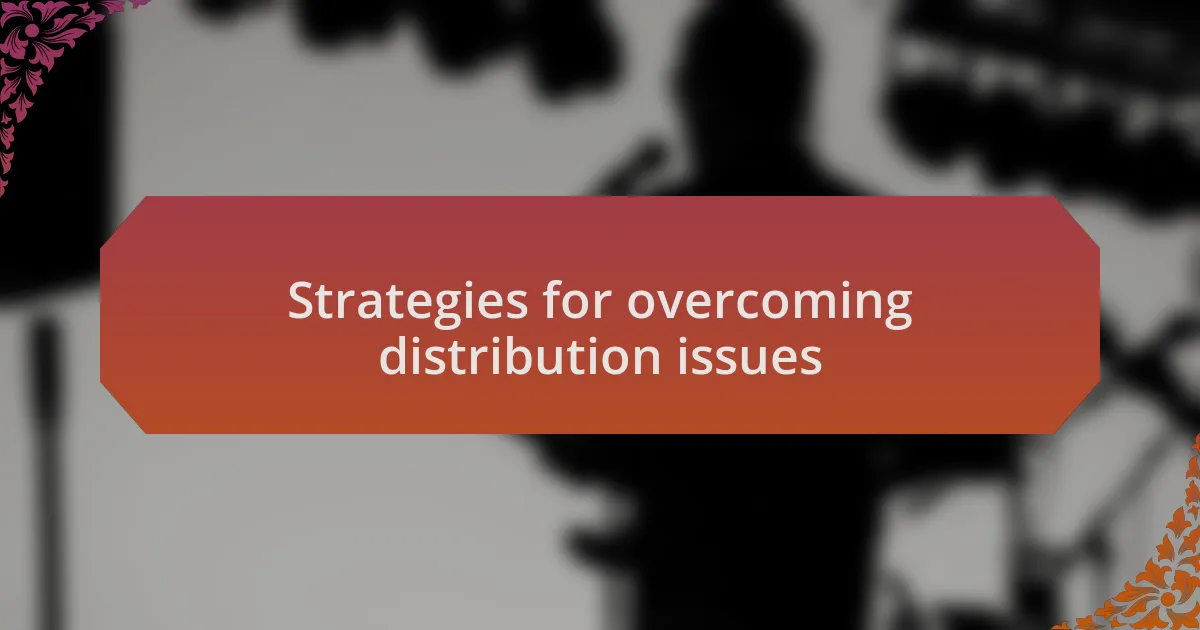
Strategies for overcoming distribution issues
When it comes to overcoming distribution issues, building relationships within the music industry can be a game changer. I once attended a small festival where I struck up a conversation with a distributor over coffee. That casual chat led to a pivotal partnership that opened various doors for my artists. It’s astonishing how genuine connections can turn hurdles into stepping stones—have you ever formed an unexpected alliance that changed your path?
Another effective strategy I’ve found is diversifying distribution channels. Instead of relying solely on major platforms, exploring niche outlets can be surprisingly beneficial. For instance, I collaborated with a local vinyl shop that not only sold records but also showcased independent artists at live events. This approach not only increased visibility for my label but also fostered a community around our music. Have you considered how local partnerships can elevate your distribution strategy?
Lastly, I’ve realized the importance of leveraging digital marketing alongside distribution. Integrating targeted social media campaigns can create buzz before a release, making distributors more inclined to support the project. I once ran a countdown campaign that created significant anticipation around an artist’s release; the excitement caught the attention of a few major distributors who had previously overlooked us. Isn’t it intriguing how a strong digital presence can amplify your reach and influence?

Case studies of successful labels
One compelling case study is that of Sub Pop Records, which famously launched the grunge movement in the early ’90s. Starting as a small independent label, Sub Pop faced significant distribution hurdles initially, struggling to get their artists’ music into stores. However, their innovative approach—like creating a buzzworthy pre-release campaign around Nirvana’s “Bleach”—drew attention from major distributors and transformed them into a powerhouse. Have you ever thought about how branding can influence distribution success?
Another interesting example is Ghostly International, an independent label that blends art and music. They tackled distribution challenges by focusing heavily on their branding and aesthetic. By cultivating a distinct visual identity that resonated with their audience, they not only enhanced their online presence but also attracted attention from unique retail partners. When you consider your label’s identity, does it resonate across all platforms?
Finally, look at 4AD, a label that has consistently managed to balance indie sensibilities with wider commercial success. They achieved this by forging strong, trusting relationships with distributors and retailers alike. I remember discussing with a founder about how their long-term vision enabled them to navigate challenges during difficult times. It’s a reminder that sometimes, perseverance combined with strategic relationships can lead to remarkable outcomes. How resilient are your relationships within the industry?
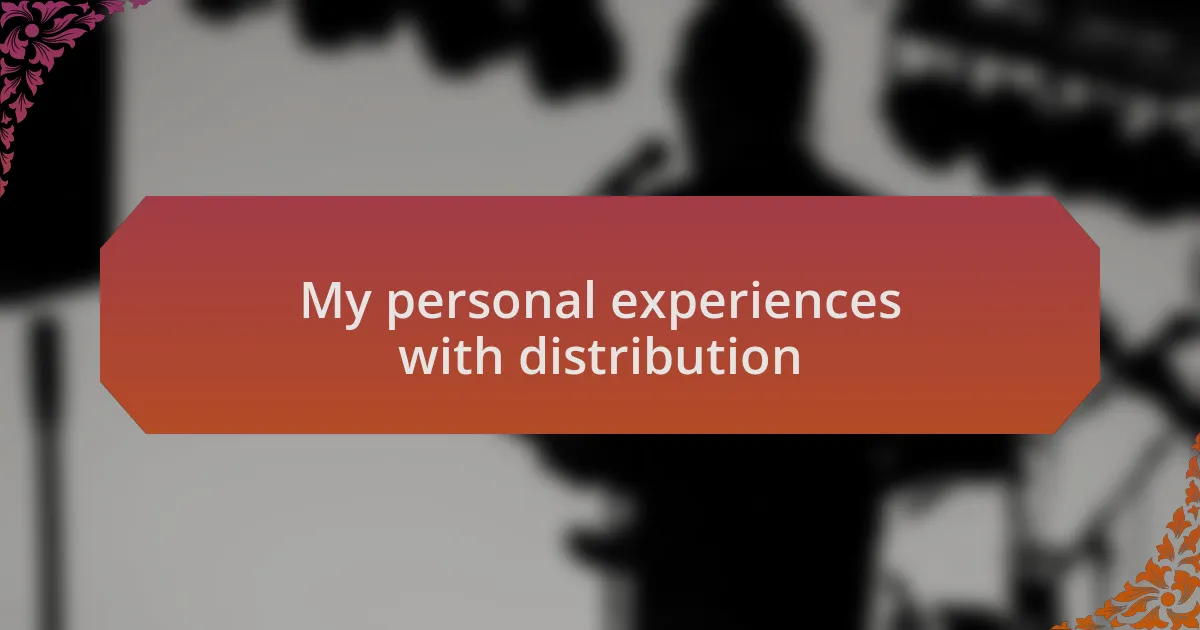
My personal experiences with distribution
Navigating the labyrinth of distribution was an eye-opening experience for me. Early on, I was excited to release my first album, but I quickly learned that getting physical copies into stores was a major hurdle. There were days when I felt like I was shouting into the void, reaching out to distributors who seemed indifferent to my passion project. Have you ever felt that frustration when your hard work seems to echo back in silence?
One specific instance stands out vividly. I worked with a small distributor who promised a lot but could barely deliver. As I watched my vinyl stack up in my living room, it struck me—I needed to take control of my distribution strategy. So, I leveraged social media to create a direct-to-consumer approach that allowed me to sell directly to my fans. It felt empowering, but it also raised a question in my mind: How often do we underestimate the power of our own networks in the distribution process?
Reflecting on those moments, I realize that each setback taught me something vital. Building relationships with other independent artists and collaborating on distribution strategies became my lifeline. Sharing experiences and tips with peers was inspiring, and it reinforced my belief that community can often lead to creative solutions. Have you reached out to fellow artists for support? It’s amazing how much we can learn from each other in this ever-changing landscape.